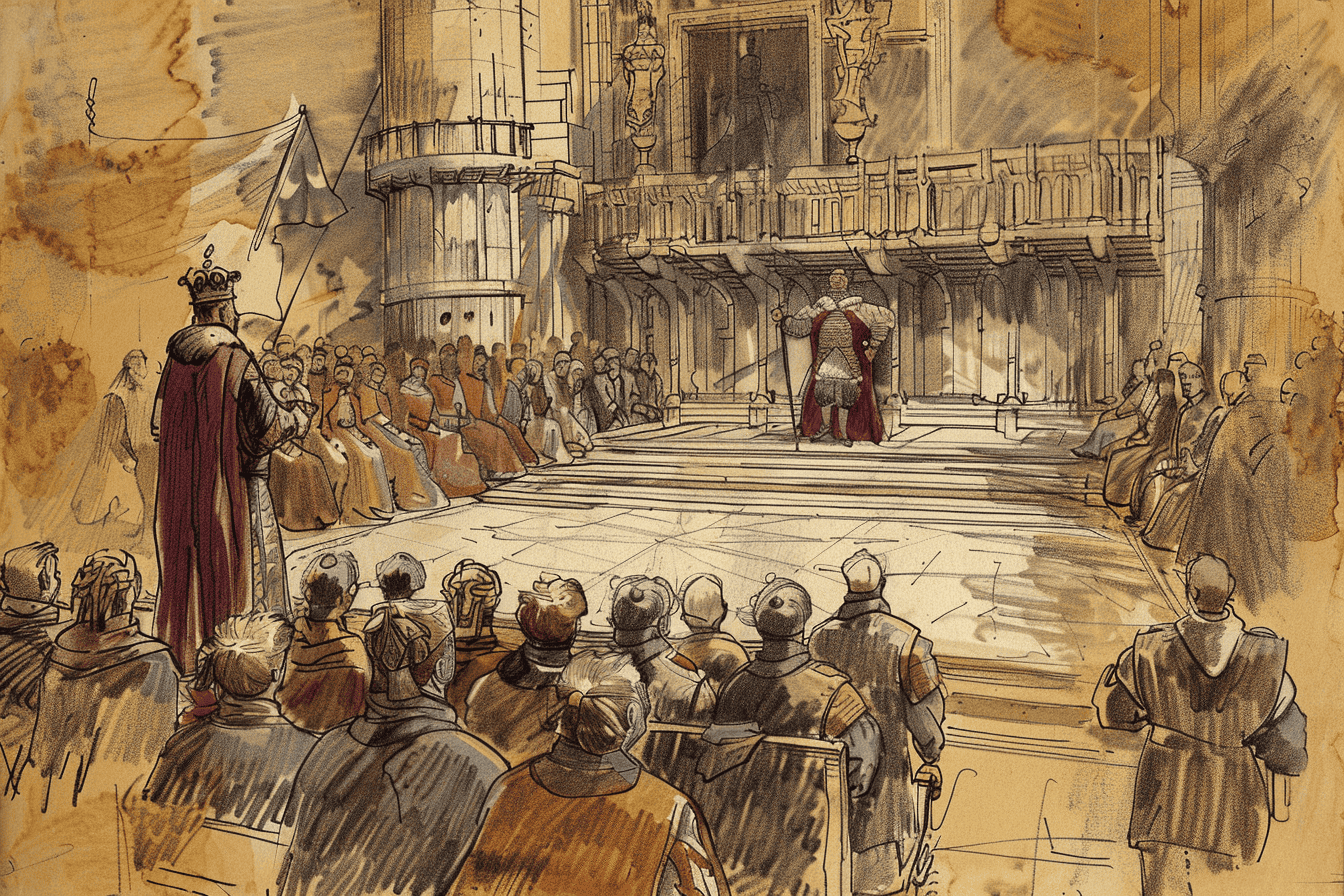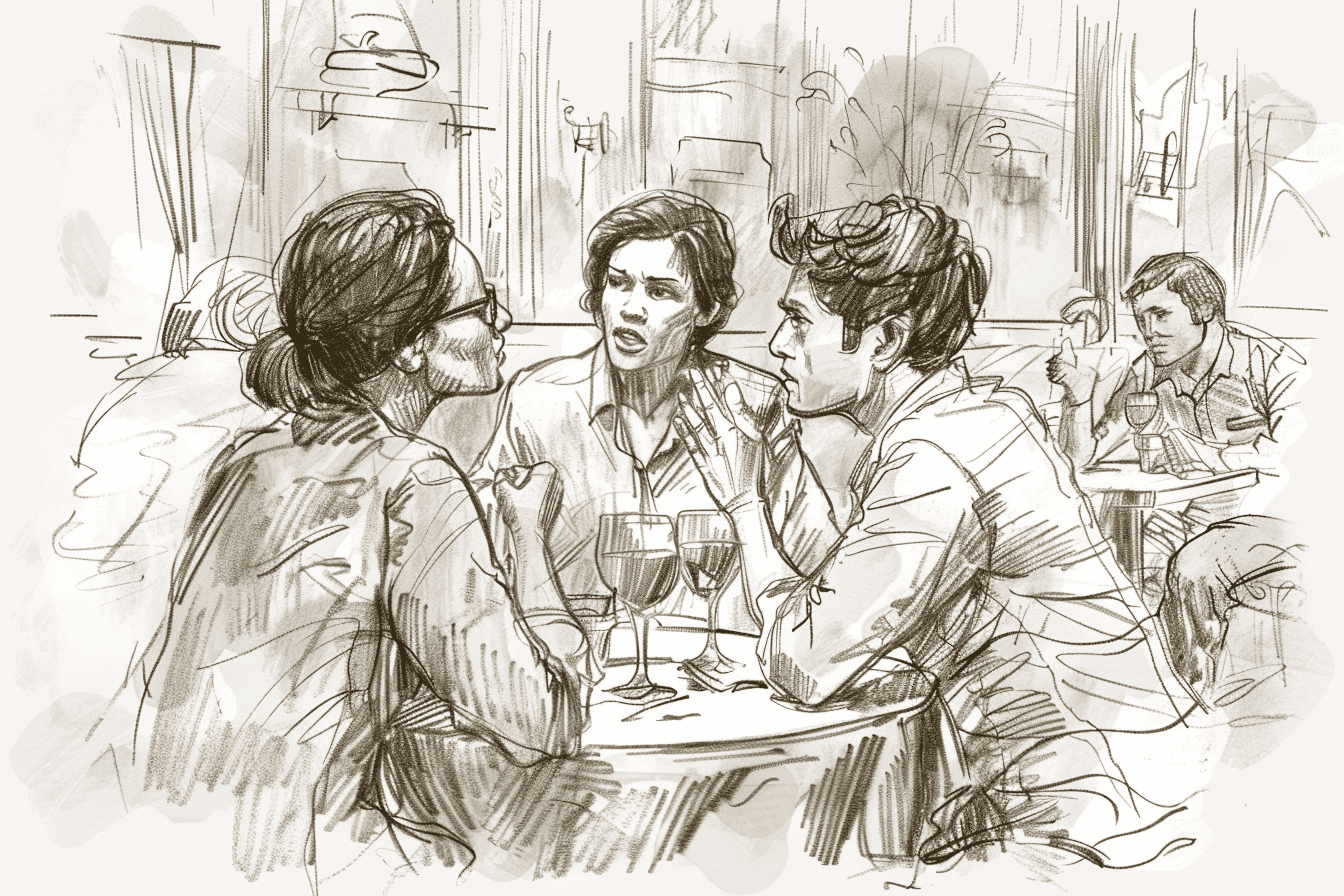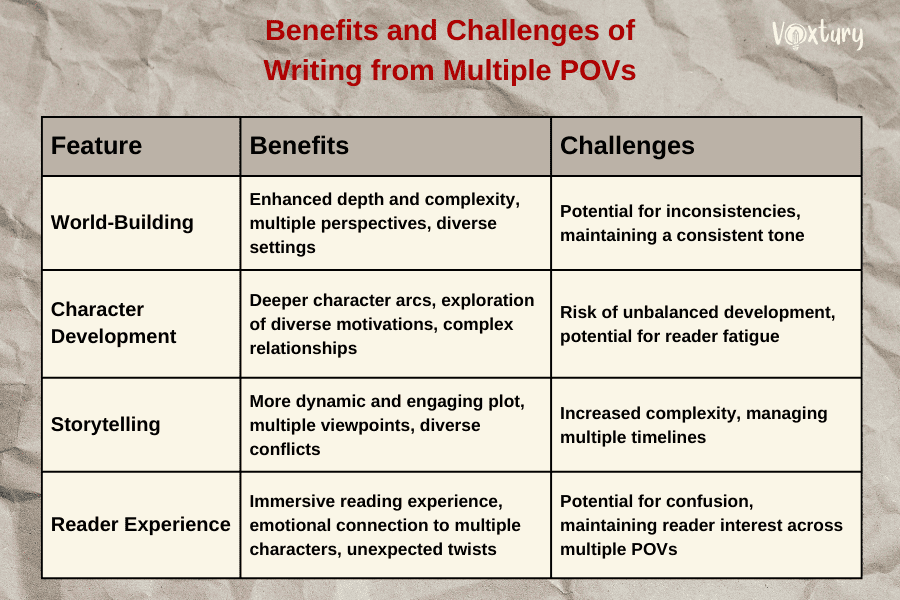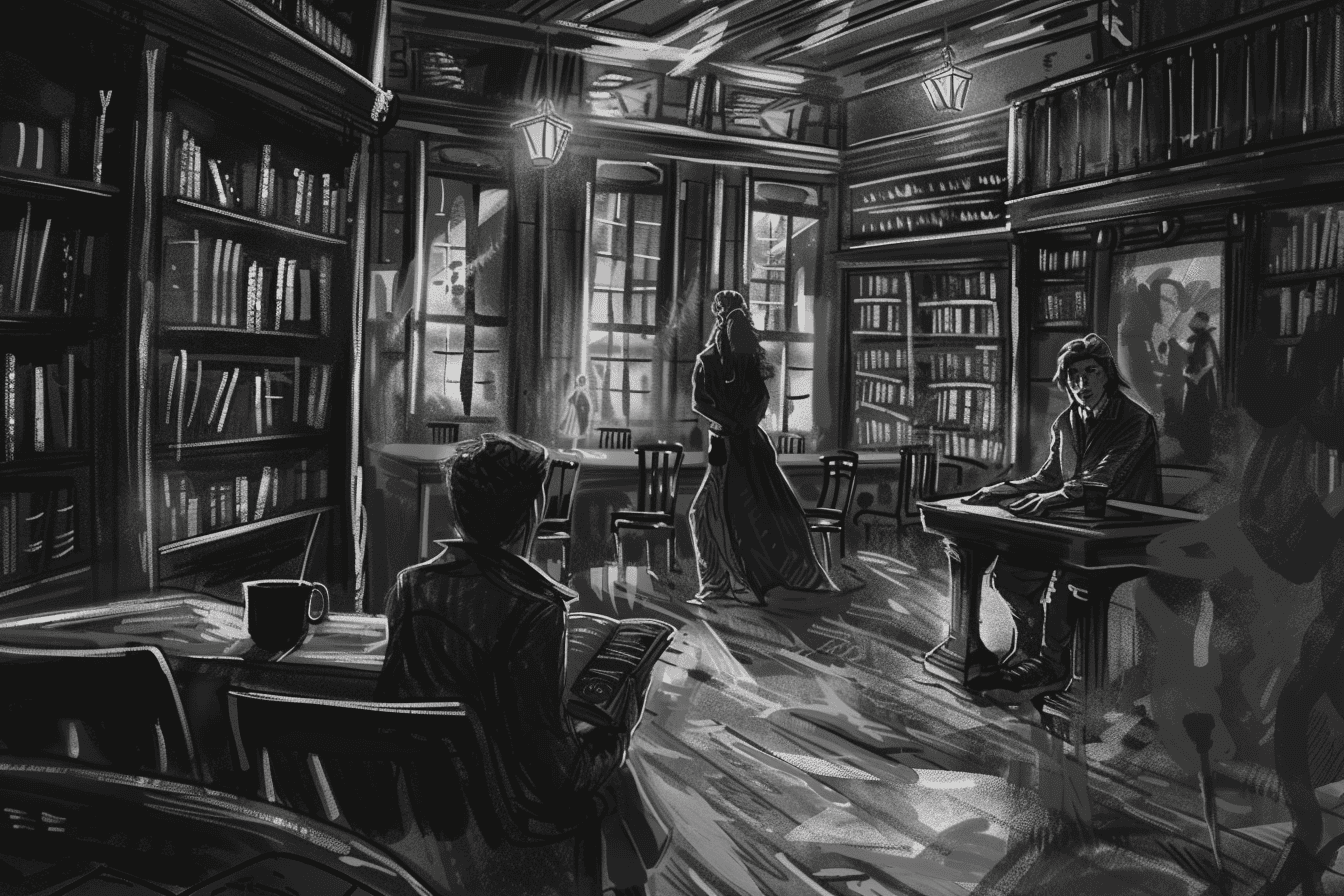Writing in multiple POVs is a great exercise for the author. Not only do you get to explore the world you’ve built even more extensively, but you also have the opportunity to sharpen your storytelling skills.
There are a lot of reasons why writers and readers alike love multiple viewpoints in books, and today, we’re discussing them all! In this helpful guide, you’ll learn:
- What are multiple points of view in writing
- What are the advantages and potential downsides of this type of storytelling
- How to effectively construct narrations with multiple points of view
- Common mistakes to watch out for
- Some fantastic multiple points-of-view examples to help you grasp the concept better
What Is a Multi-POV Story?
First things first, what is multiple POV structure in a story?
A multi-POV story is a narrative told from the perspective of multiple characters. This technique allows the reader to experience the story from different viewpoints, gaining a deeper understanding of the plot and characters.
Some famous examples? We don’t have to look far. Fans of Game of Thrones, Six of Crows, or Gone Girl know exactly how multiple points of view are usually executed in a story.
POVs present a challenge?
If you need a quick reminder on how different POVs in narration are used and what exactly the difference is between Third Person Omniscient and Third Person Limited, hop on to our comprehensive Points of View in Writing guide. Learn about 1st, 2nd, 3rd and 4th POV + examples!
As we said, there is a whole plethora of reasons why using multiple perspectives can be a fantastic literary device. Let’s dive into more details in the next section!

Benefits & Challenges of Writing from Multiple POVs
If you love the world and characters you created (and most authors do), it’s no wonder you feel the call to go deeper, show more, use a wider range of crayons for your world-building and character arcs. All of this can be beautifully explored with various different perspectives.
Benefits of Multiple POVs
Enhanced World-Building
By using multiple POVs, authors can paint a more comprehensive and intricate picture of their world. This technique allows readers to experience the story from different angles, revealing hidden details, cultural nuances, and political landscapes.
Multiple POVs allow you to explore various settings, cultures, and even time periods within a single story. This can create a more immersive and detailed world.
A great example of that exact effect is illustrated in A Song of Ice and Fire by George R.R. Martin. This epic fantasy series is renowned for its intricate world-building, which is greatly enhanced by the use of multiple POVs. By following characters from different social classes and regions, readers gain a comprehensive understanding of Westeros.
Diverse Storytelling
Tightly connected with world-building, we have diverse storytelling that comes from utilizing multiple points of view. Through it, we can introduce a variety of conflicts, cultural backgrounds, values, struggles, and arcs, all within the same story.
Each character brings a unique perspective, shaping the reader’s understanding of the world. For instance, a noble character might focus on political intrigue, while a commoner might highlight societal struggles.
We could look at The First Law Trilogy by Joe Abercrombie as an example. Known for its dark humor and complex characters, this series utilizes multiple POVs to explore moral ambiguity and human nature. The interplay between different perspectives adds depth to the plot and character development.

Exciting Ensemble Cast
One of the most significant benefits of using multiple POVs is the ability to create a dynamic and engaging ensemble cast. A great way to engage readers, show contrasts, alliances, conflicts, and romance arcs in a very entertaining way.
Giving readers direct insight into what different characters think and do shortens the distance between them and the audience. This can lead to a more complex and satisfying reading experience as readers become invested in the lives of multiple characters.
Let’s point your attention to The Six of Crows Duology by Leigh Bardugo, where we follow the exciting (and incredibly illegal) ventures of six (dangerous) outcasts on their way to get revenge, regain freedom, and maybe get a little richer.
This is an excellent example of the art of creating a very sharp, entertaining, and easy-to-love ensemble of characters.
Challenges of Multiple POVs
A good author is aware of the opportunities. A really skilled one is also prepared for the challenges ahead. Here’s why using multiple perspectives in one story can be difficult to execute well.
Balancing Character Development
One of the biggest challenges of writing from multiple POVs is ensuring that each character receives adequate development. It’s important to strike a balance between spending too much time on one character and neglecting others.
Each character should have their own unique arc, motivations, and conflicts. To achieve this, you must carefully allocate page time and ensure that each POV contributes meaningfully to the overall story.
Maintaining Consistency
Keeping track of multiple characters, their timelines, and their relationships can be a daunting task. But, it’s crucial to maintain consistency in characterization, world-building, and plot development.
Any inconsistencies or contradictions can confuse readers and detract from the overall impact of the story. To avoid this, authors often use detailed character outlines and timelines to keep track of each character’s journey.
Developing Unique Voices
Finally, we have the art of writing characters with unique voices and presence on the page. Each character should have a distinct voice that reflects their personality, background, and perspective.
Making all the characters sound the same is a rookie mistake. It takes a skilled pen to create immersive, detailed, and varied POVs.

How to Write a Book from Multiple Points of View – 4 Expert Tips
Plan Your Characters and Their Arcs
Before you start writing, create detailed character profiles for each POV character. Consider their:
- Backstory: Their history, experiences, and motivations. What events shaped who they are today?
- Goals and Desires: What do they want to achieve? What are their dreams and ambitions?
- Conflicts: What obstacles hinder their progress? What are their fears and insecurities?
- Voice: How do they speak and think? What is their unique perspective on the world?
By understanding your characters deeply, you can ensure that their perspectives are distinct and compelling. Do this groundwork, and you won’t have issues in crafting engaging and complex storylines that intertwine with each other.
Master the Art of Switching Perspectives
Switching POVs is an art in itself. It’s essential to signal the shift clearly to avoid confusing the reader. Remember – they’re not sitting in your head, and often, it’s their first encounter with your story, so you need to establish a new POV in a way that doesn’t leave much room for confusion.
Use techniques like:
- Chapter Breaks: Start a new chapter for each POV. Make it known rather quickly which POV the reader is about to start.
- Clear Headings: Use chapter headings that identify the POV character.
Additionally, consider the timing of your POV switches. A sudden shift can disrupt the flow of the story, so choose your moments carefully.
Avoid head-hopping!
Rapidly shifting between characters’ thoughts and perspectives can disorient the reader, making it hard to stay engaged. An easy way to do that is simply by dedicating each scene to a single character’s perspective. If you need to reveal information, instead of directly stating a character’s thoughts, use dialogue and action to convey their feelings and motivations.
Maintain Ties Between POVs
While each POV character has their own unique story, it’s important to connect them to the overall plot. This can be done through:
- Shared Events: Have characters witness the same events from different perspectives.
- Intersecting Storylines: Connect characters through shared experiences or common goals.
- Revealing Information: Use one character’s POV to reveal information that is unknown to another.
By maintaining these connections, you’ll create a cohesive and engaging narrative. Even when the characters are separated by miles and kingdom borders, they still serve one greater story, and their storylines should connect and intertwine at some point.
Select Your Characters Carefully
Not every character needs their own POV. Revolutionary, we know. But it’s still crucial to master the art of choosing the right narrative perspectives that will enrich the world.
In short, choose characters who can contribute meaningfully to the story and offer unique perspectives. Avoid overusing POVs, as this can dilute the impact of each character’s story. Make peace with the fact that some of your favorites are better off without their own POV.
Remember, the key to successful multiple-POV storytelling is balance and clarity. By following these tips, you can create a rich and immersive reading experience for your audience.

Common Mistakes of Multi-POV-Writing
What are some common mistakes to look out for when using multiple POVs?
1. Inconsistent Character Voices:
- Problem: Characters sounding too similar or inconsistent with their established personality.
- Solution: Develop strong character profiles and use distinct dialogue tags, narration styles, and vocabulary to differentiate them.
Want to make your writing sharper?
Use Voxtury’s Online Rich Text Editor to improve the formatting of your text as well as identify duplicate words that disrupt the flow and make your writing flat. Refine the dialogues and different characters’ POVs to match their unique tone of voice with our free and easy-to-use editor!
2. Overuse of Head-Hopping:
- Problem: Rapidly switching between characters’ perspectives within a scene.
- Solution: Use clear transitions, such as chapter breaks or time jumps, to separate POVs. Focus on one character’s perspective at a time.
3. Unbalanced Character Development:
- Problem: Neglecting some characters in favor of others.
- Solution: Allocate adequate page time to each character. Ensure that each POV contributes to the overall plot and character development.
4. Weak World-Building:
- Problem: Inconsistent world-building elements across different POVs.
- Solution: Create a detailed world-building outline and ensure that each character’s perspective aligns with the overall world.
5. Overly Complex Plotlines:
- Problem: Too many intertwining storylines that become difficult to follow.
- Solution: Keep the plot focused and avoid unnecessary subplots. Prioritize the main narrative and use POVs to enhance it.
Summary
Using multiple perspectives can add a lot to your manuscript. It might take some time to really grasp the art of using this literary device, but once you do, a whole new world opens up.
Follow the tips we outlined here, and you should have a good base to practice with. Of course, don’t forget to check out Voxtury’s book writing resources to learn more about how to construct a successful narration and become the next bestselling author!
See you next time!